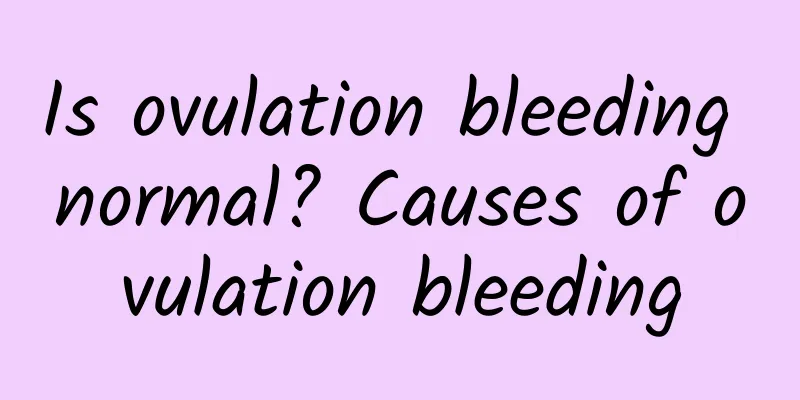Is ovulation bleeding normal? Causes of ovulation bleeding

|
Some women will have a small amount of bleeding during ovulation, which is called ovulation bleeding . Is ovulation bleeding normal? What should I do if ovulation bleeding occurs? The egg is usually released about half a month before the next menstrual period, and about ten days before and after the egg is released is called ovulation. There are many women who have some bleeding during ovulation. Ovulation bleeding is actually a symptom that every woman may experience. The degree of bleeding also varies according to each person's physical condition, but generally the amount of bleeding is very small. Symptoms of ovulation bleeding are usually normal and temporary because the body is in the ovulation period. After the mature follicle ruptures and ovulates, the estrogen level suddenly drops, which will cause the growth of the endometrium to rely on estrogen for maintenance. The estrogen level drops temporarily and part of the endometrium loses support and can fall off and become necrotic, with bleeding symptoms. After the egg is released, the corpus luteum of the ovary is formed. At this time, the body increases the secretion of estrogen, and the estrogen level also rises. The necrotic endometrium will be repaired quickly and the bleeding will stop. If ovulation bleeding does not occur often and the amount of bleeding is small, it can be left untreated. If bleeding continues or blood loss increases during ovulation, it will affect conception. You can go to the hospital for a gynecological examination to avoid diseases and other conditions that may endanger your health. How does ovulation bleeding occur? Many factors can affect bleeding during ovulation. For most women who bleed during ovulation, the cause is unclear. The following reasons may be considered. It may be related to the maturation of the follicle, which is the small chamber where the egg cell lives. The ovaries produce about 20 follicles each menstrual cycle, but usually only one follicle matures and is the only follicle that may produce an egg. When the mature follicle releases the egg, pain and bleeding occur. During ovulation, the surface of the follicle becomes fragile and ruptures under the regulation of hormones. The egg is discharged through the small hole on the surface of the follicle and enters the fallopian tube. This may be related to the change in estrogen levels during ovulation. During ovulation, estrogen levels rise and then fall, causing a small loss of endometrium, resulting in bleeding. The mechanism is the same as menstrual bleeding, but the amount is smaller. |
<<: Is it normal for leucorrhea to be brown? Should it be treated?
>>: How long can I walk after an abortion? Post-abortion care measures
Recommend
Eating the right breakfast is healthy! Lose weight within 1 hour after waking up
In the morning, sunlight turns on the biological ...
Introduction to threatened abortion
Every woman longs to be a happy mother. Pregnancy...
Men also suffer from osteoporosis but are not aware of it
According to statistics, about 500,000 people ove...
What medicine should I take for a 6.2 cm uterine fibroid? What should I do if my uterine fibroid is 0.7 cm?
What medicine should I take for a 6.2 cm uterine ...
What is the diagnosis of Bartholin's gland cyst?
What causes Bartholin's gland cysts? Is breas...
What are the symptoms of uterine fibroids? What will happen if you have uterine fibroids?
What are the symptoms of uterine fibroids? This i...
What department should I go to if I have congenital absence of vagina?
In life, many female friends are troubled by cong...
Master these 3 tips for drinking tea to help you lose weight and burn fat! The 3 key ingredients of drinking tea for weight loss revealed
Under the influence of tea culture, drinking tea ...
How to take care of women after menopause
Women need to adjust their healthy lifestyle afte...
What are the ultrasound sonographic manifestations of uterine fibroids?
The ultrasound image of uterine fibroids is relat...
How much does an abortion pill cost? What tests should be done before taking an abortion pill?
If the unplanned pregnancy does not exceed 49 day...
What should I do if I am pregnant with an ovarian cyst? Will it affect my pregnancy?
What should I do if I am pregnant with an ovarian...
What causes body aches during menstruation?
Why do I feel body aches during menstruation? Bod...
Several effective dietary treatments for irregular menstruation
Diet therapy is a very effective method for treat...
Are there any dangers of uterine fibroids?
Uterine fibroids may affect women's reproduct...









